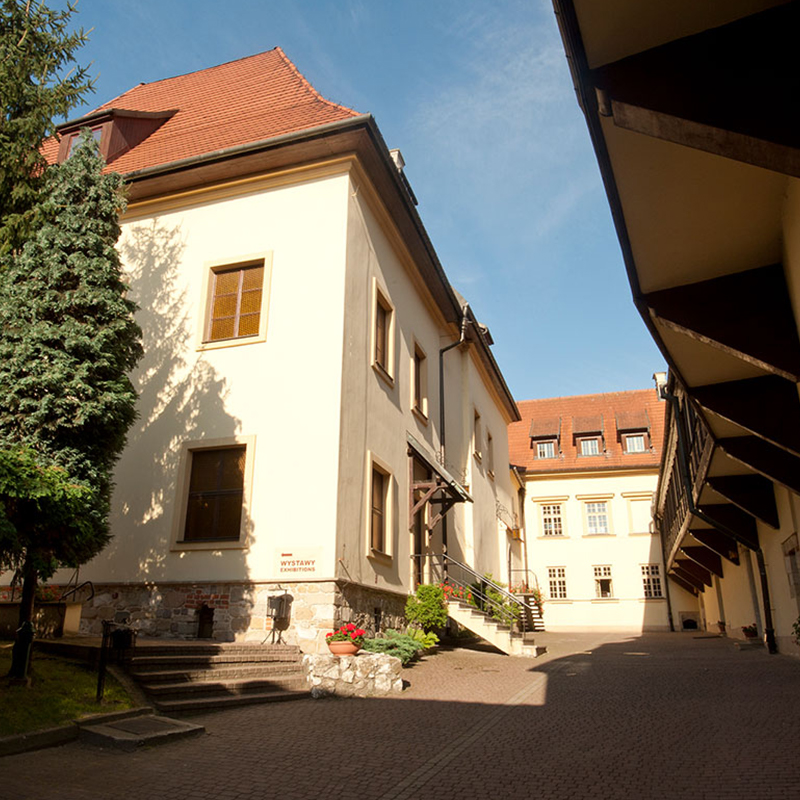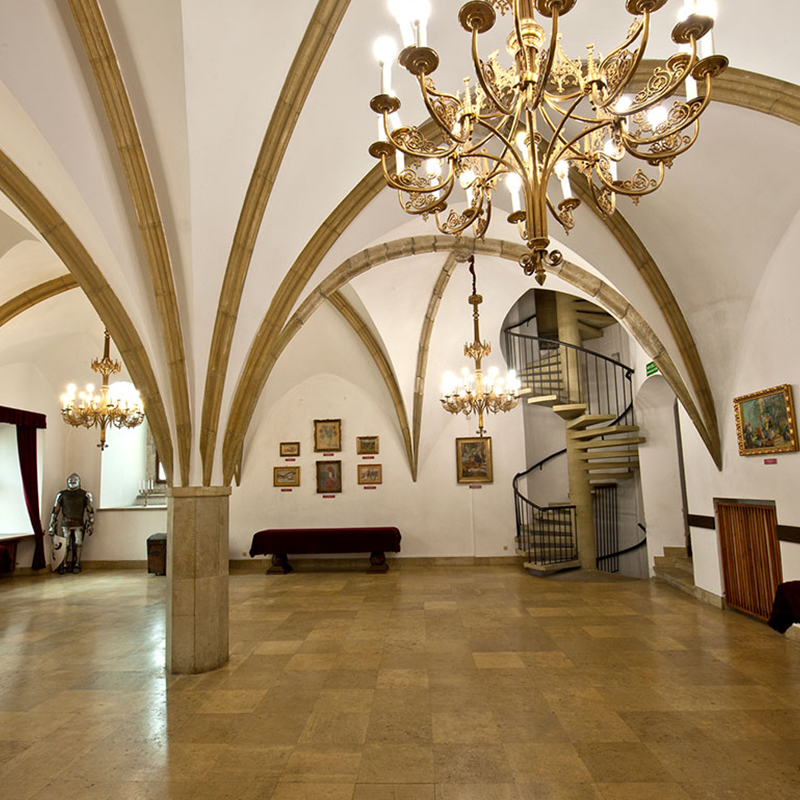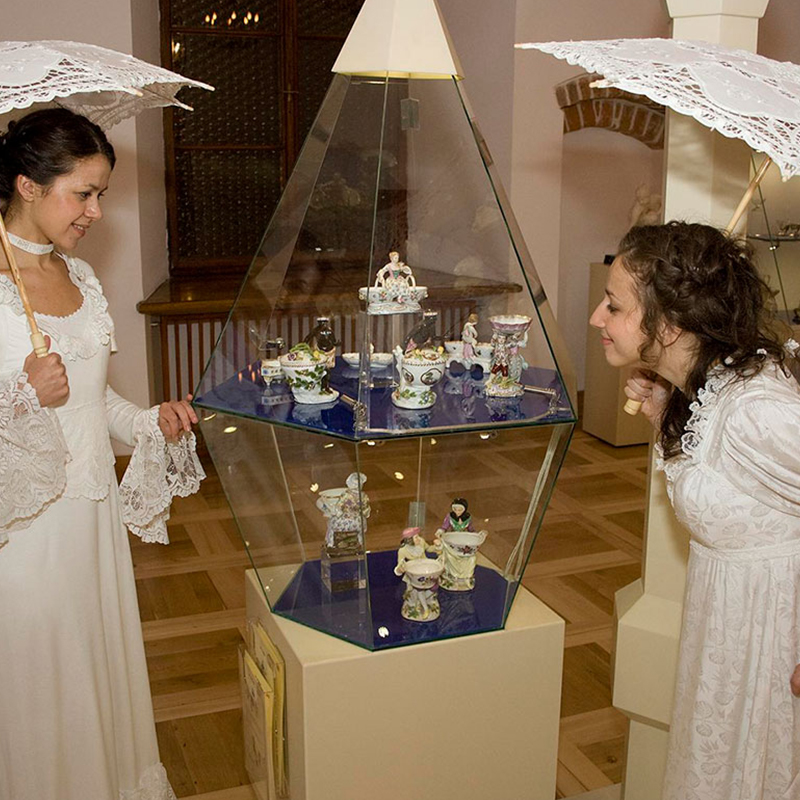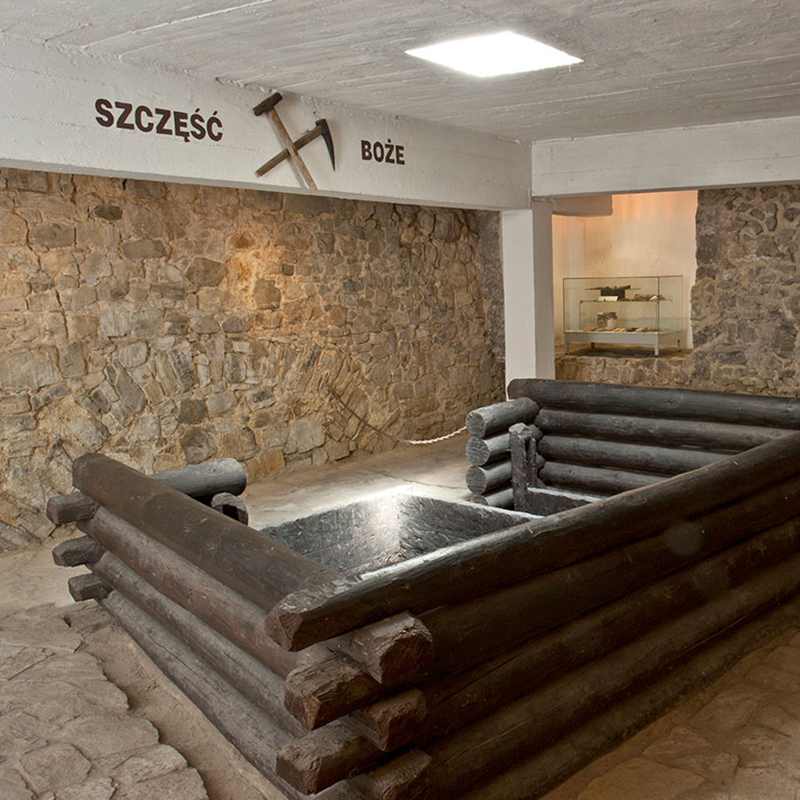SALTWORKS CASTLE IN WIELICZKA
For 700 years the entire Cracow Saltworks - the mines in Wieliczka and Bochnia, the brewing plants, workshops and warehouses - were managed from here. Participants of the conference will be able to see the Castle on the first day of the conference, i.e. Monday evening, 22 May 2023, during a ceremonial banquet. The tour of the exhibition lasts approximately one hour.
Saltworks Castle is located in the very centre of the city, 150 metres from the Regis Shaft and 300 metres from the Daniłowicz Shaft. Its grounds can be entered through the Castle's main gate from the east or through a gate hidden in the southern wall from the side of Jana Pawła II Avenue (pedestrian zone). Entering the courtyard through it, on the left is the Central Castle, formerly known as the "House amidst the Mine". This oldest building of the complex was erected at the turn of the 13th/14th century next to the first mine shafts in Wieliczka. Over the centuries it was extended, in the 16th century it was consumed by fire, and in 1945 a stray Soviet bomb fell on it, bringing considerable damage. But the "House" has been restored and here today are the exhibitions of the Cracow Saltworks Museum.
In the original basement of the building, there is an archaeological exhibition, presenting the history of settlement in the area from the Stone Age to the Middle Ages, and a small geological exhibition. On the upper floor, on the other hand, you can see the representative Gothic Hall with portraits of the proud saltworks managers. Here they managed the enterprise, held court and entertained kings. On the ground floor and on the upper floor of the building, another exhibition entitled "Salt cellars – tiny Mastterpieces" attracts attention. At present, it is the richest collection of its kind in Poland, and perhaps even in the world. There are approx. 400 objects on display, with the second half stored in a warehouse, and the collection is still being expanded. One can see salt cellars from all over the world, from the 15th to the 20th century. They are made of silver and gilded silver, porcelain, mother-of-pearl, bone, glass and stone. Some of them are unique in the world.
After walking out of the Central Castle, the North Castle is in front of visitors; this is the former “Salt Works House”, erected gradually from the 15th century. It housed a chapel, guardhouse, cashier's office, chancellery, salarial archives, book collection and officials' flats. It was here that the miners were issued with tools for their work, tallow for their shackles, and where they were paid their wages and allocated salt. The first Mining School operated here from 1861. Until 2019, it housed the head office, offices and studios of the Cracow Saltworks Museum, as well as a rich saline archive and library. The North Castle is currently completing a major refurbishment, which was carried out between 2020 and 2023. The construction and modernisation works aim to make this building available for exhibition, cultural and educational purposes and, above all, to increase the existing exhibition space by 310%. An extremely important objective of the redevelopment is to improve the standards of securing the collections against theft and damage, to raise storage standards and to adapt the facilities to the needs of people with various disabilities. Thanks to the investment, the facility will meet the requirements of a 21st century museum. Once the construction work has been completed, work will begin in the North Castle to organise a new permanent exhibition, entitled "Salt jewel in the crown", presenting the almost 800-year history of the Cracow Saltworks and the town of Wieliczka. The new permanent exhibition will allow the museum's rich resources, kept in storage for many years, to be much better displayed. Modern and interesting temporary exhibitions will also be presented in the North Castle.
During the banquet , participants will be able to see a board exhibition in the North Castle, presenting the project for the reconstruction of the castle and the organisation of the new permanent exhibition, as well as the unique polychromes discovered under the plaster during the renovation, dating from the 17th to the 19th century.
In the castle courtyard, visitors will be able to see fragments of the medieval town walls and the only surviving defence tower from the 14th century in Wieliczka. Beneath the surface of the courtyard, visitors will visit one of the oldest Wieliczka shafts from the middle of the 13th century. The low stone walls in the courtyard are remnants of the salt store's kitchen, where free meals were served to miners and carters arriving for salt from the mid-16th century. The third building of the complex, the so-called South Castle, closing it from the south, was built in Austrian times (19th century) in the place of the former stables and farm rooms. Behind it, an Italian-style chateau garden was laid out in the 16th century.





